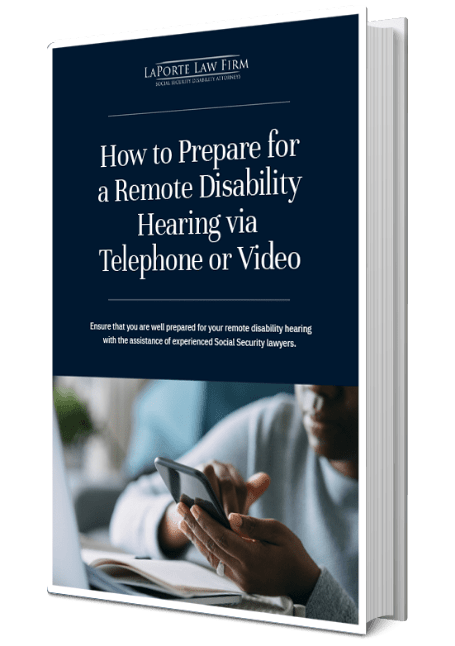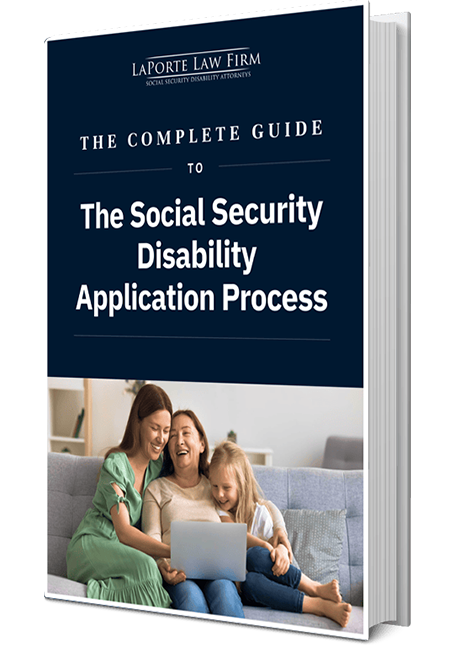
If you are applying for disability benefits or appealing an initial denial, you may have received a request from the Social Security Administration (SSA) to complete an Adult Function Report (Form SSA-3373). Filing out this report can feel overwhelming and intimidating. If you are not sure of where to start or how to accurately convey your daily struggles in this form, you’re not alone. Many many applicants find the Adult Function Report to be one of the most difficult parts of the Social Security disability process because of its detail and the importance of being both honest and precise. Understanding how to complete it effectively can make a significant difference in how your claim is reviewed.
What Is the Adult Function Report?
The Adult Function Report, or Form SSA-3373-BK, is an eight-page questionnaire required by the Social Security Administration for adults applying for disability benefits. It asks detailed questions about your daily activities, personal care, mobility, social functioning, hobbies (past and present), and your ability to concentrate or complete tasks. Its purpose is to give the SSA a full picture of how your medical conditions limit your ability to function in a work setting and at home.
The Adult Function Report can be very important in the evaluation of a disability claim. A well-documented, accurate form strengthens your case by showing how symptoms translate into real-world limitations. In contrast, vague or inconsistent answers can raise doubts about credibility or lead to a denial. Treat this form as your opportunity to tell your story in your own words.
Proactive Preparation: Setting Yourself Up for a Detailed and Honest Report
Before you start filling out the form, take time to gather and organize your information.
- Have a list of your medical conditions, diagnoses, treatments, medications, and side effects ready.
- Create a “day-in-the-life” snapshot. Describe a typical day, from waking up to going to bed. Include what you can and cannot do, how long tasks take, and what symptoms interfere with your routine. Be honest about both average days and bad days to provide a realistic picture.
- Ask family, friends, or caretakers who observe your daily struggles to share their perspectives. Their insights can help you recall examples and prepare them for the Third-Party Function Report (SSA-3380-BK), which supports your statements.
Step-by-Step Guide to Filling Out the Adult Function Report
Keep three key principles in mind: honesty, clarity, and consistency. Never exaggerate or minimize your symptoms. Provide clear, specific examples — for instance, “I can stand for about (10 minutes) before my legs go numb.” Be consistent with the information already in your medical history and any prior SSA forms you have submitted. If there have been changes, such as a worsening of your condition, explain them clearly so the SSA understands what has changed and why.
- Basic information: Provide accurate identifying information. Double-check your name, date of birth, and contact details.
- Illnesses, injuries, or conditions: List all conditions (both diagnosed and undiagnosed) that affect your ability to function. Include key symptoms and side effects, even those that may seem minor or unrelated to the main reason you stopped working.
- Daily activities: Describe how your day unfolds, including how long it takes to bathe, dress, cook, or do chores. If you need help, adaptive equipment, or frequent breaks, state this clearly.
- Your abilities: Detail your physical and mental limitations, how far you can walk, how long you can sit or stand, and how pain or fatigue affects your ability to concentrate on tasks. Be realistic and precise.
- The “Remarks” section: Use this section to expand on earlier answers. Clarify anything that might be misunderstood and connect your symptoms directly to your limitations (e.g., “Due to neuropathy, I drop objects frequently and cannot grip tools safely”).
Common Mistakes to Avoid When Filling Out the Adult Function Report
Despite their best efforts, many claimants inadvertently make mistakes when filling out the Adult Function Report. Below are some of the most common errors to avoid:
- Being vague or too general. Avoid brief statements like “I have trouble walking.” Instead, include specific details such as “I can walk about 50 feet before my knees give out.” Specific examples help SSA understand the extent of your limitations.
- Focusing only on “good days.” The SSA needs a complete picture of how your condition affects you. Be sure to describe how often bad days occur and how they limit your ability to function or perform daily tasks.
- Having inconsistencies in other forms or medical records. If your doctor’s notes indicate that you can walk only one or two blocks at a time, but you report a mile, it may raise credibility concerns. Likewise, if earlier forms mention that you went to the gym once or twice a week but you now report that you no longer do, it is important to explain why. If your condition has worsened, clarify when and how your symptoms changed. Providing this context helps the SSA understand that your situation has evolved, rather than appearing inconsistent. Always keep your answers consistent with your medical evidence and prior SSA forms.
- Exaggerating your limitations. Overstating symptoms can hurt your case. The SSA carefully evaluates credibility, so it is best to remain honest and realistic about what you can and cannot do.
- Leaving questions blank. Every section of the form is important. If a question doesn’t apply to you, write “N/A” and provide a brief explanation when appropriate.
- Not explaining the “why.” Go beyond simply listing what you can’t do; always explain why. For example, instead of writing “I can’t tie my shoes,” you can say “I can’t tie my shoes because back pain prevents me from bending.”
The Role of the Third-Party Function Report
The Third-Party Function Report (Form SSA-3380-BK) is designed to be completed by someone who knows you well and can provide an outside perspective on how your impairments affect your day-to-day life. This form is a valuable companion to your own Adult Function Report because it corroborates your statements and reinforces your credibility in the eyes of the Social Security Administration.
Choosing the right person to complete this form is crucial. Ideally, it should be someone who interacts with you frequently, such as a close family member, trusted friend, or caretaker, who has personally observed your struggles with daily activities over time. Their insights can provide powerful, real-world examples that strengthen your claim.
You should also guide your chosen person to be specific, detailed, and honest in their responses. Instead of general statements such as “She has trouble using her hands,” encourage them to provide concrete examples, such as “She often drops objects because of hand tremors” or “She needs help buttoning his shirts due to limited hand strength.” Specific details like these give SSA reviewers a clearer understanding of your limitations and how they affect your ability to function independently.
After You Submit: What Happens Next in Your Disability Process
The SSA typically allows 10 days to return these questionnaires, with an additional 10-day extension, or more days if needed, upon request. Once you and your chosen person have completed and submitted your reports, keep the following points in mind:
- Keeping copies of your submitted forms. It is important and helpful to always keep a full copy of the completed forms for your records. You may need them later if the SSA requests clarification.
- Potential follow-up questions from the SSA. The SSA may call or send follow-up questionnaires. Respond promptly and consistently with your original answers.
- Understanding the waiting period. Processing times vary. Expect several months for review, and be prepared for additional evidence requests or consultative exams.
- Long-term implications. The responses on the Adult Function Report and Third-Party Report will remain part of your disability file. Clear, detailed answers now can help support future reviews or continuing disability evaluations.
Seeking Professional Help: When a Disability Lawyer Can Make a Difference
Completing the Adult Function Report can be daunting, but it is also your best chance to show, in your own words, how your disability truly impacts your life. Take your time, be specific, and ensure your answers align with your medical records and previous statements. With careful preparation and, when needed, professional help, you can make your function report a powerful piece of evidence in your disability claim.
If your case involves multiple conditions, previous denials, or confusion about SSA rules, a disability attorney can be invaluable. Professional representation can make a significant difference in your disability claim by improving its clarity, organization, and overall persuasiveness. An experienced attorney ensures your forms and evidence are complete, consistent, and presented effectively, increasing your likelihood of approval while reducing the stress of navigating the process alone.
If you have questions or need guidance with your claim, contact LaPorte Law Firm for a free consultation to discuss how we can help you move forward with confidence.
FAQs
The Adult Function Report (SSA-3373) focuses on how your medical condition affects daily activities, while other forms cover work history or third-party observations.
The applicant (adult seeking disability benefits) completes the form. A family member or caretaker can provide additional insights or perspective on a separate third-party form (SSA-3380).
Answers should be specific, honest, and thorough, including examples of daily challenges, average and bad days, and how symptoms affect activities.
Yes, you can involve family, friends, or caregivers for input and consult a disability lawyer or advocate to ensure the form is accurate and complete.
SSA reviewers use it to evaluate your claim. They may contact you for follow-up questions, and the information can affect both your initial decision and future disability reviews.
















